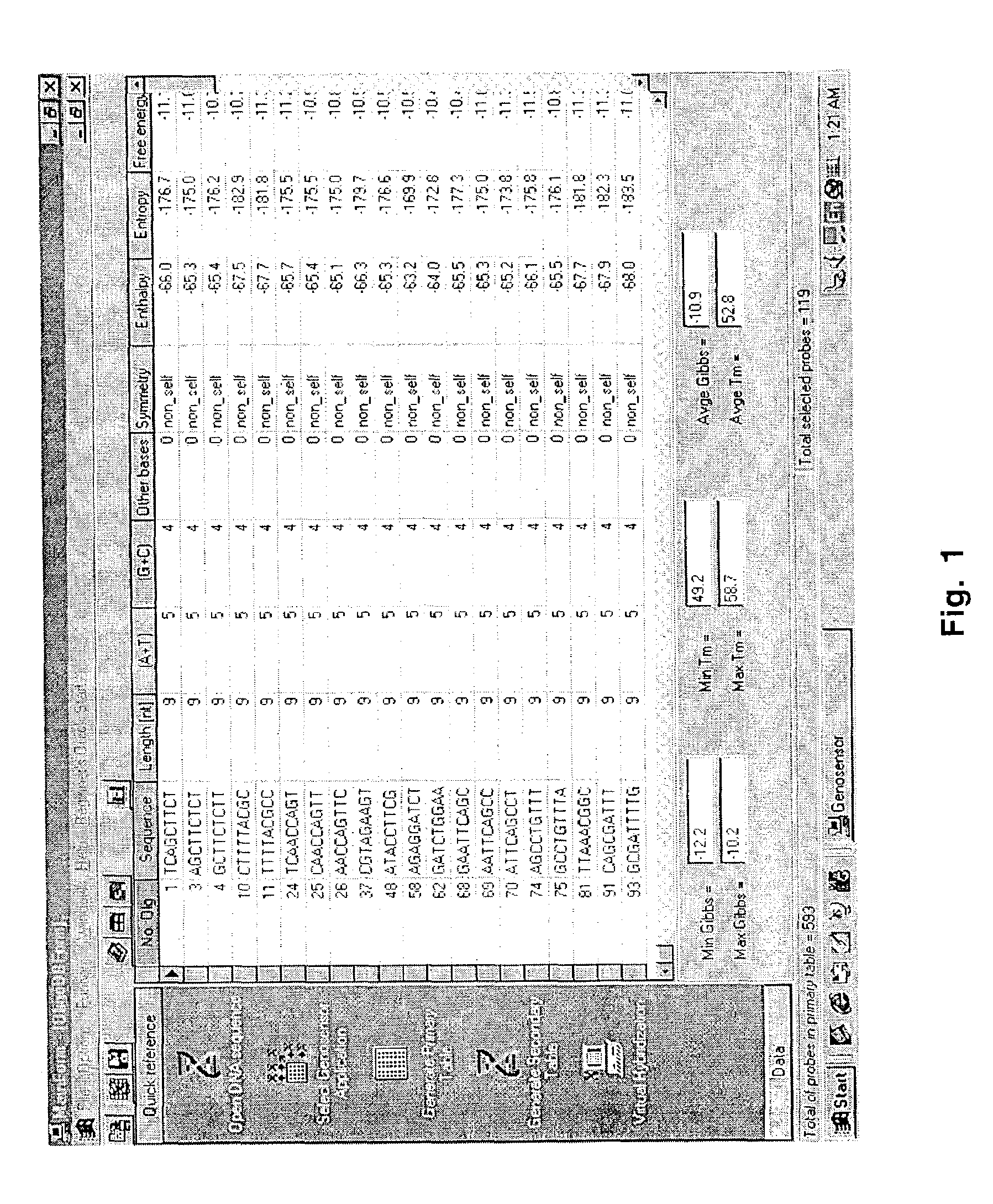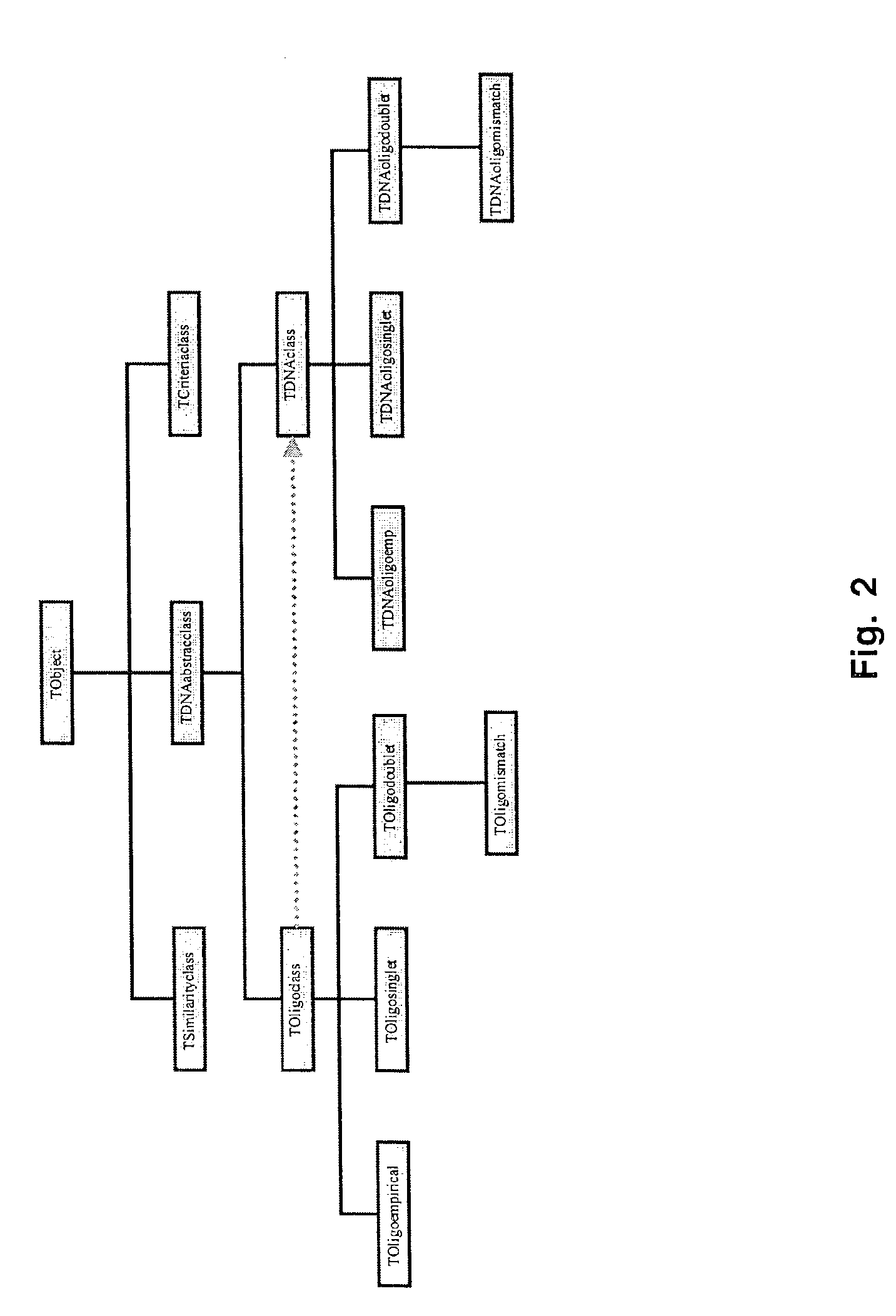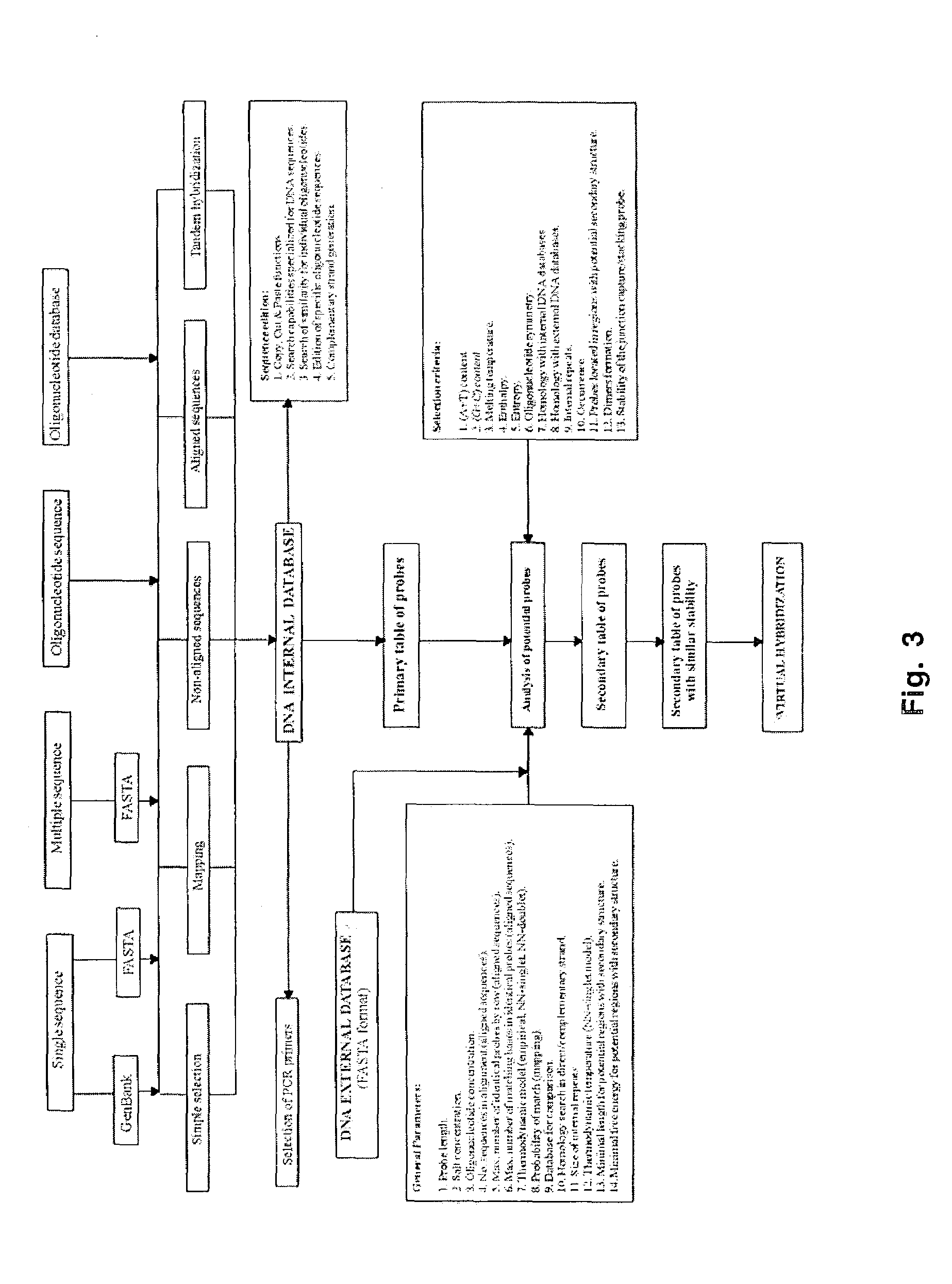Oligonucleotide probes for genosensor chips
a technology of oligonucleotide probes and genosensor chips, which is applied in the direction of instruments, biochemistry apparatus and processes, material analysis, etc., can solve the problems of loss, loss, and inability to predict specific hybridization patterns
- Summary
- Abstract
- Description
- Claims
- Application Information
AI Technical Summary
Benefits of technology
Problems solved by technology
Method used
Image
Examples
example 1
Program Details and Algorithms
[0073]There are several aspects of oligonucleotide interactions which are taken into consideration in the algorithms of the Genosensor Probe Designer program. Some of these design considerations are illustrated and discussed in FIGS. 4-6.
[0074]Frequently it is important to know the occurrence of particular n-mers in a particular DNA sequence in order to be able to design probes for DNA finger printing or SBH. The occurrence of particular n-mers can be determined by searching all possible combinations of n-mers or mapping of the DNA target sequence.
[0075]The number of possible combinations of n-mers is equal to 4n. Therefore, there are 16 combinations for dimers. As an example, the occurrence of each dimer on the sequence: 5′-TATAGTAGAAACCACAA-3′ (SEQ ID NO.1) can be searched by comparing target / pattern (using Brute search, Boyer-Moore, or Quicksearch) with the pattern sliding along the target. Searching each dimer will obtain the following results: AA=3...
example 2
Oligonucleotide Arrays Targeted to Microbial 16S rRNA Genes
[0097]Successful performance of algorithms implemented in the Genosensor Probe Designer program has been demonstrated through the discrimination of Pseudomonas aeruginosa and closely related bacterial strains via hybridization fingerprinting using genosensor chips. The seven test strains and the accession numbers for the 16S rRNA gene sequences are listed in Table 2.
[0098]
TABLE 2Accession NumbersLengthAccessionDefinition(nt)AB002661Bacillus sp. gene for 16S rRNA, complete sequence.1553AB020208Bacillus pumilus DNA for 16S ribosomal RNA.1471AF064460Pseudomonas veronii 16S ribosomal RNA gene,1521complete sequence.D84006Pseudomonas alcaligenes 16S rRNA gene,1530complete sequence.Z76662P. fluorescens 16S rRNA gene.1507AF017749Stenotrophomonas maltophilia 16S ribosomal RNA1507gene, complete sequence.D84020Pseudomonas putida 16S rRNA gene, complete1527sequence.X06684Pseudomonas aeruginosa DNA for 16S rRNA.1537AB001447Pseudomonas sy...
example 3
Virtual Hybridization
[0111]Using virtual hybridization (VH) analysis rules as described earlier, the set of selected 16S rRNA gene probes and target sequences were analyzed to predict virtual hybridization patterns. Table 5 represents the predicted and experimentally observed hybridization signals obtained in all of these experiments, grouped according to predicted free energy of probe-target hybrids. FIG. 15 shows a comparison of predicted and experimental hybridization patterns in a representative experiment.
[0112]
TABLE 5Occurrence of Potential Hybridization Sites, Experimental Hybridization Signals, AndProbability of Hybridization As A Function of Predicted Free Energy Range.StrongWeakTotal# of sites# of sites withexperimentalexperimentalexperimentalProbability ofΔG rangepredictedperfect matchsignals (S)signals (W)signals (S + W)hybridization 0 to +2500000.00−2 to 0 700000.00−4 to −22300110.04−6 to −41560110110.07−8 to −61790041410.23−10 to −8 678627330.49−12 to −108482366420.5...
PUM
| Property | Measurement | Unit |
|---|---|---|
| Fraction | aaaaa | aaaaa |
| Length | aaaaa | aaaaa |
| Force | aaaaa | aaaaa |
Abstract
Description
Claims
Application Information
 Login to View More
Login to View More - R&D
- Intellectual Property
- Life Sciences
- Materials
- Tech Scout
- Unparalleled Data Quality
- Higher Quality Content
- 60% Fewer Hallucinations
Browse by: Latest US Patents, China's latest patents, Technical Efficacy Thesaurus, Application Domain, Technology Topic, Popular Technical Reports.
© 2025 PatSnap. All rights reserved.Legal|Privacy policy|Modern Slavery Act Transparency Statement|Sitemap|About US| Contact US: help@patsnap.com



